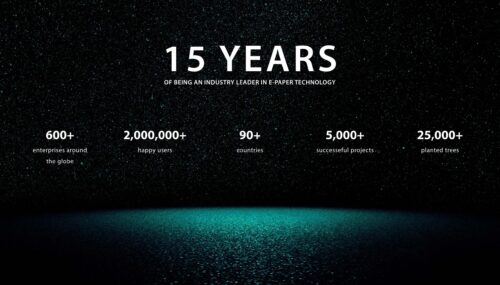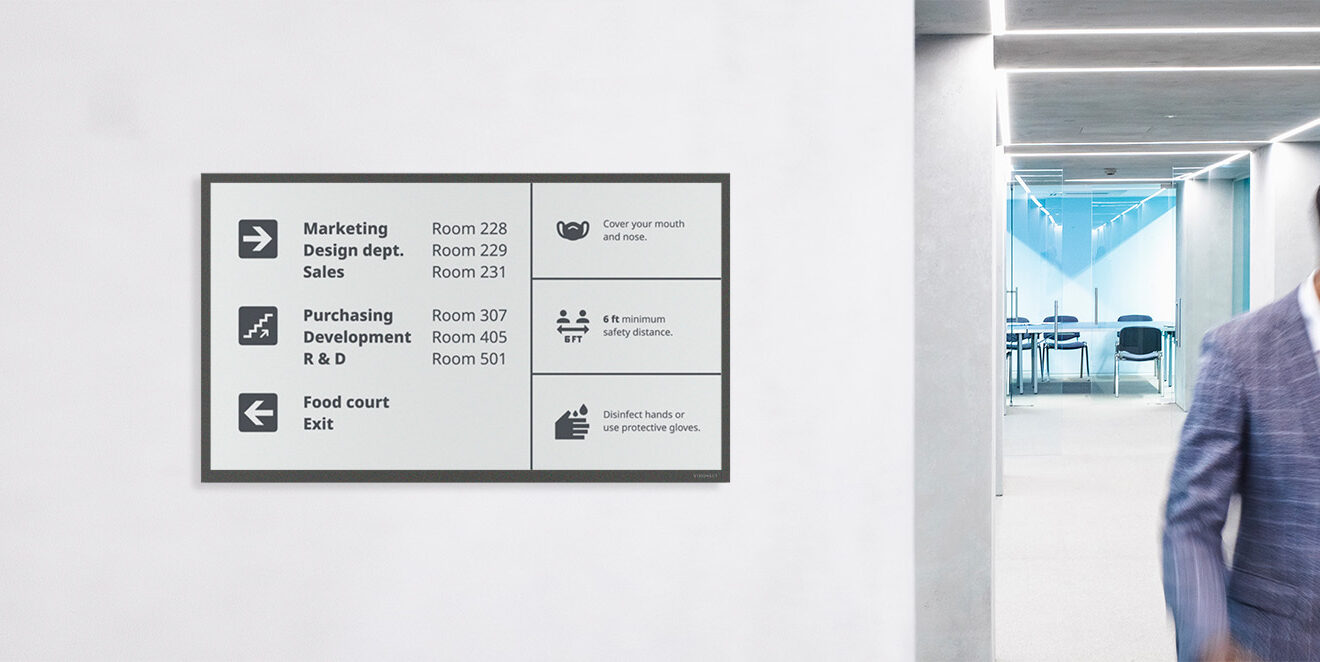

Wayfinding signage: Choosing the right one
Visionect, 22 Sep 2022
More recently, wayfinding serves more purposes than getting a traveler from point A to B. There’s so much wayfinding can say about a place, organization, or company beyond simple instructions on how to navigate a space. This article outlines how to get the most out of your digital wayfinding solutions.
The power of wayfinding
Every element of a building or space affects how users feel, react, and respond to the company or organization that runs it. If the front door is hard to find, visitors enter feeling annoyed. If the floor plans are hard to follow, they feel exasperated. If messages are unclear, they feel stressed.
Many businesses don’t foresee the true impact and importance of wayfinding and how it sets employees and guests up for a great day in the environment.
Here are some examples of just how powerful wayfinding solutions can be:
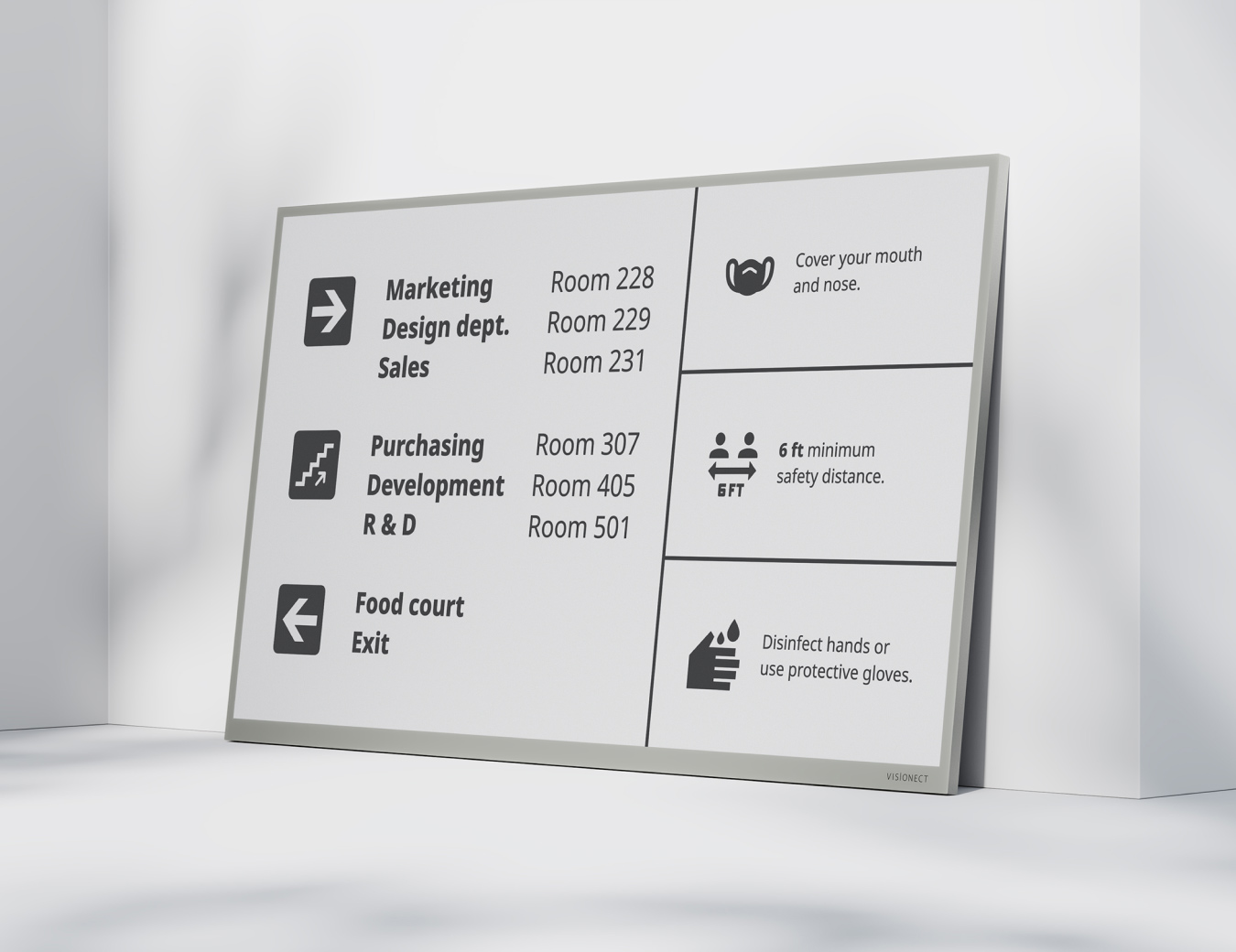
Relieve stress
Some of the most stressful environments include airports, train stations, and healthcare facilities. Yet, every space has its own stressors. Visitors and employees don’t need wayfinding worries added to their days.
Having the right wayfinding signage and information can go a long way toward helping people navigate a space without added stress. With less stress, visitors can enjoy a space more thoroughly, employees can focus on being productive, and airport patrons will be less frantic. Not only will people want to return to the space, but they’ll be more amiable during their stay.
Support wellbeing
Sometimes, the concept of well-being is just as important as the actuality of it. When people see wayfinding resources, they feel cared for, and naturally, people gravitate to businesses that appear to care for their patrons or employees.
For example, some hospitals use digital signage displays to show an emergency room’s wait time, health alerts, current times, and other information. This transparency helps patients feel attended to and reassured, bolstering confidence in the onsite caregivers.
Company identity
While relieving stress and supporting well-being both boost a company’s reputation and image, the job isn’t done. Patrons, visitors, and employees will never forget how the space made them feel. The trick is, making sure they remember who made their experience so great.
The best wayfinding solutions offer customizable branding options. With a company’s logo on every screen, sign, and bit of information, users are more likely to link the company with their great experience.
Things to consider
When looking for a digital wayfinding solution, there are a few aspects to consider. Here are some questions to spark your decision-making:
-
- What information will be displayed? Will the information be permanent or will it change? For example, health regulations, event details, or even QR codes are dynamic forms of information that can change regularly.
- How will the information be displayed? Will the information be text? A map? Symbols? Pictures?
- Will the display be indoor or outdoor? Does the display need to be weatherproof? What temperatures will it experience? Does it need to be visible at night?
- What’s the budget? When considering costs, it’s important to think beyond the initial purchase price. Consider installation costs, energy consumption, longevity, and more.
- Are there installation limitations? Are there any building regulations to navigate? Materials that prohibit mounting, wiring, or cables?
Wayfinding with Visionect
There are a few key differences between Visionect displays and traditional LCD and LED solutions. Yet, let’s have a look at some of the similarities first.
The best part about digital displays is that they’re dynamic. The information can be changed fluidly, showing any maps, symbols, text, or pictures that’ll help with the wayfinding experience. As health regulations change, events happen, or flights come and go, the information on the digital displays can be updated in real-time over WiFi.
Next, there are a few differences that separate Visionect electronic-paper displays from the rest. Most importantly, they can run for long periods of time on battery power alone. Each low-power display can go months on a single charge or easily run off of solar power, making them virtually wireless. No cabling is required and the devices can be mounted on any material without drilling or any harm to the surface. Plus, while LCD and LEDs struggle in outdoor environments, e-paper displays have proven to work in more extreme conditions from -5°F to 150°F (-20°C to 65°C).
The energy-efficient design also makes Visionect displays some of the most affordable options on the market. Visionect devices are constructed of reusable and recyclable materials, minimizing their impact on the environment. These materials also happen to be some of the most durable in the industry, adding to each device’s longevity.
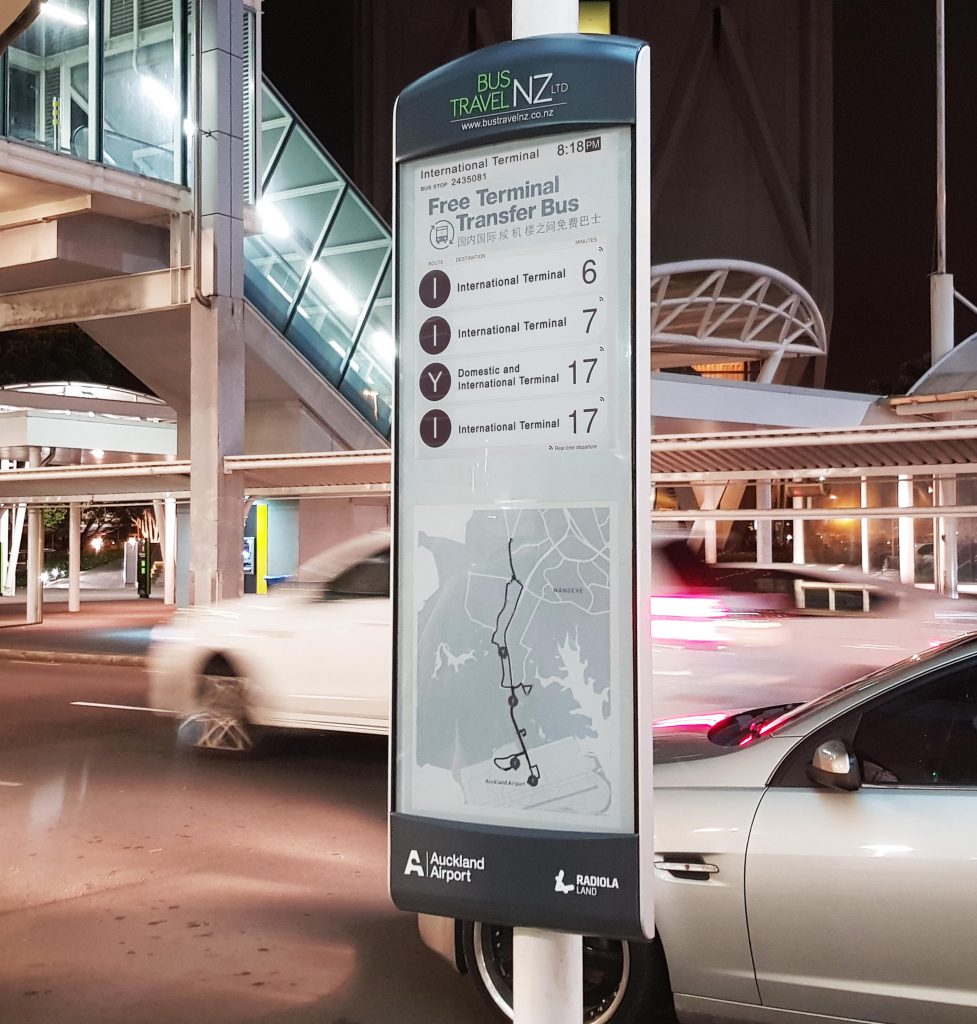
Three industries that chose Visionect
While Visionect is quickly becoming a worldwide favorite wayfinding solution, there are three main industries that have capitalized on the power of our e-paper displays.
Airports
The Auckland airport public transport sector uses Visionect e-paper displays outdoors, improving efficiency for over 10 million passengers per year in New Zealand. These public information displays have been installed at the bus stops of the international terminal. They show real-time information including airport maps, bus tracking, marketing messages, and more.
Over in Amsterdam, the Schiphol airport uses Visionect signs for indoor digital signage. These displays are strategically placed exactly at the points where they’re needed to help visitors navigate the area.
“Visionect screens gave our clients the option to go sustainable, or go digital with little effort while impressing their visitors with an eye-catching, high-quality design.”
– Dennis Groeneveld, CEO of Future Forward
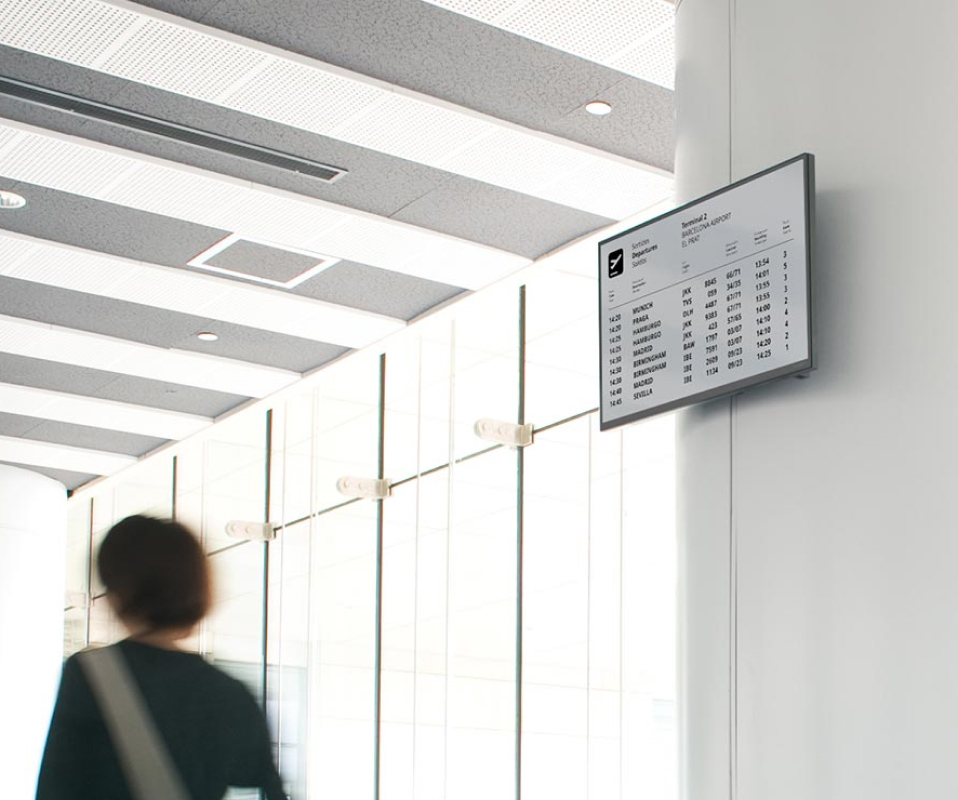
Hotels
A luxurious coastal hotel with a breathtaking view of the Alps uses Visionect displays to educate guests on the amenities the resort offers. The resort is comprised of six hotels. With such a large footprint, it’s no wonder guests were unsure of what to expect.
Visionect Place and Play devices can be placed anywhere from a reception desk to hallway walls, which is exactly what this resort did. Through a mobile app, guests can choose where they want to go, what events they prefer, and how large their party is. The system then guides them step by step, with 13-inch e-ink displays updating via Bluetooth to show custom information for each guest.
Education facilities
Educational facilities (schools, museums, and libraries) are some of the most creative, ingenuous environments around. They’ve used Visionect displays for everything from dynamic wall murals to information boards and wayfinding. One example is the National and University Library of Slovenia, which uses Visionect displays to inform visitors about their opening hours and to communicate entrance restrictions.
Dynamic, versatile, simple, and timeless
While all digital screens can be dynamic, only e-paper displays are ultimately versatile, simple, and timeless. The subtle pepperlike screen is perfect for gently guiding visitors through spaces without overwhelming their senses. The wireless design is as sleek as they come, making any space look polished.
How can digital wayfinding improve your space? There’s more than one way to find out. Get in touch with our sales team to learn more about Visionect Place & Play displays and how they can enhance your environment.
Tags

